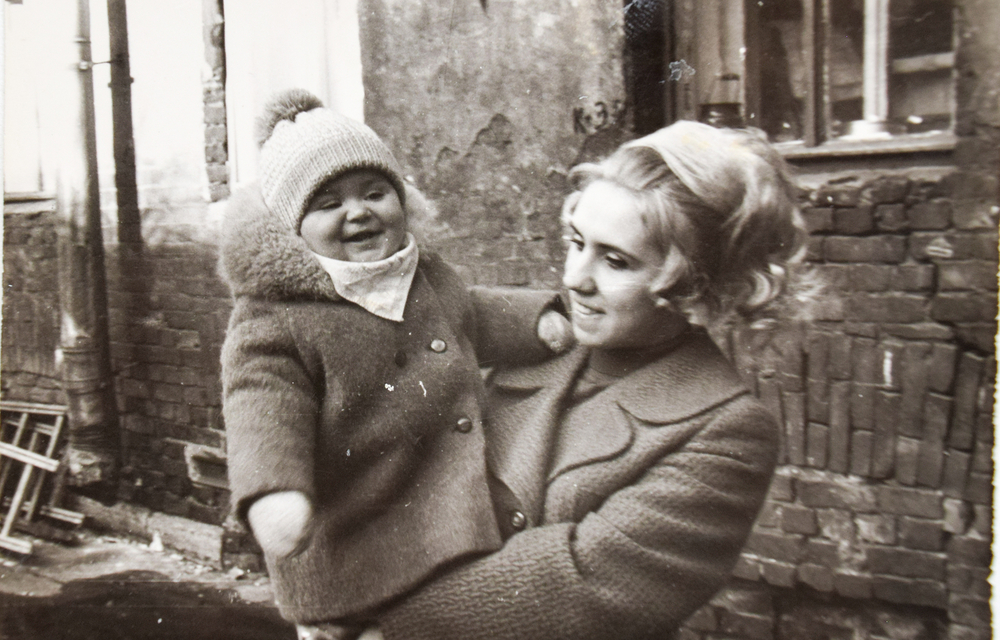The 1970s are often remembered as a decade of change, but for many women, daily life was still shaped by outdated laws and limiting expectations. While the era brought progress in some areas, women across the country were still forced to follow rules that restricted their independence, controlled their appearance, and dictated their roles in society. From financial restrictions to workplace discrimination, the idea of equality was still far from reality. Looking back, many of the things women had to do just to get by seem completely absurd by today’s standards. These twenty examples offer a clear picture of how much society has changed, and why it is important to remember what came before.
1. Ask a Husband’s Permission to Open a Bank Account

In the 1970s, many women, especially those who were married, had no legal access to open a bank account without their husband’s consent. This rule stemmed from older property laws that treated married women as dependents rather than independent adults. Even if a woman earned her own money, banks often required a male co-signer to approve any financial transaction or account opening. This blocked many women from managing their own savings, investing, or taking out loans. It also forced women to rely completely on their spouses for basic financial tasks like writing checks or withdrawing funds. If a woman was single, divorced, or widowed, she sometimes had to fight for exceptions or settle for limited account access. Today, this kind of restriction would be widely considered financial discrimination.
2. Quit Their Jobs When They Got Pregnant

Workplace discrimination against pregnant women in the 1970s was not only common, it was often written into company policies. Many employers would immediately terminate or pressure women to resign once they started showing visible signs of pregnancy. The belief was that pregnant women were too fragile, unreliable, or distracted to continue working. Some workplaces even had formal “maternity leave” policies that simply meant the woman would be permanently replaced. Teachers, flight attendants, and nurses were especially targeted. In many places, even women who wanted to return after giving birth were denied re-employment. The absence of legal protections meant women either left quietly or hid their pregnancies for as long as possible. This practice made career advancement nearly impossible and reinforced the idea that motherhood and professional life could not coexist.
3. Take Their Husband’s Last Name Automatically

During the 1970s, taking a husband’s last name after marriage was not just expected, it was assumed to be automatic. If a woman wanted to keep her maiden name for professional or personal reasons, she faced legal obstacles. Government agencies, banks, schools, and employers all expected to see her identified by her husband’s name. Some places would even reject documents that didn’t match the married name on record. In some cases, a woman who kept her own name had to file special paperwork or face delays in travel, taxes, or employment. Public opinion also leaned heavily against women who chose not to adopt their husband’s surname. They were often seen as rebellious or uncommitted. It took years of legal challenges and cultural shifts before women could keep or reclaim their birth names without facing administrative or social backlash.
4. Endure ‘Wife-Testing’ Job Interviews

Job interviews for women in the 1970s often included inappropriate and invasive questions about personal life, family plans, and home responsibilities. It was common for interviewers to ask whether a woman planned to have children, how many she expected to raise, and whether she could be relied upon to put work ahead of family. Women were often rejected on the assumption that they would become distracted by motherhood or home duties. Some employers even asked if the husband supported her decision to work. These questions had little to do with skills or qualifications and everything to do with outdated gender roles. Women were judged based on their perceived loyalty to their husbands rather than their ability to perform the job. The practice blocked many talented women from being hired or promoted and reinforced the stereotype that women only worked until they got married or had kids.
5. Get a Male Co-Signer for Loans and Credit Cards

Access to credit was another major barrier for women in the 1970s. If a woman wanted to apply for a credit card, loan, or mortgage, most banks required a male co-signer. This meant that a husband, father, or even a son had to sign off, regardless of her income or creditworthiness. Married women could be denied credit on the grounds that their husband was the primary earner. Single or divorced women were seen as risky and unstable borrowers, regardless of their employment status. Even women with strong financial records were routinely turned down without a man’s backing. This policy made it nearly impossible for women to build credit, start businesses, or buy property on their own. It reinforced dependency on male relatives and limited their ability to control their financial futures.
6. Accept Lower Pay for the Same Work

In the 1970s, the wage gap between men and women was even more pronounced than it is today. Women were paid significantly less than men for doing the exact same job, even when they had the same qualifications and experience. This practice was not only common but often written into company policy. Employers defended it by claiming men were the main providers or that women would leave the workforce to raise children. In some industries, women were placed into lower-paying job titles even when their duties matched those of higher-paid male employees. Complaining about unequal pay often led to retaliation, being labeled difficult, or losing the job entirely. There were few laws in place to address wage discrimination, and most women had little recourse if they were underpaid. This reinforced economic inequality and made it harder for women to achieve financial security.
7. Wear Mandatory Skirts or Dresses at Work and School

Dress codes in the 1970s were strictly enforced, especially for women in professional and educational settings. Skirts and dresses were considered mandatory attire for women in many offices, schools, and public buildings. Pantsuits or slacks were seen as rebellious or even inappropriate. In schools, girls could be sent home or punished for wearing trousers. In the workplace, a woman who showed up in pants might be reprimanded, denied promotions, or even fired. These rules were based on rigid gender norms that saw femininity as defined by appearance rather than function. Women working in physically demanding jobs or cold weather were still expected to wear skirts, regardless of practicality. It took years of activism and slow policy changes for women to earn the right to dress comfortably and professionally in clothing that suited their needs, not outdated standards.
8. Be Denied Birth Control Based on Marital Status

In the 1970s, access to birth control was still restricted for many women, especially those who were unmarried. Pharmacists and doctors could legally refuse to provide contraceptives to single women, citing morality or policy. Some states had laws in place that limited access to married couples only. Unmarried women who sought birth control risked being judged, refused service, or forced to lie about their marital status. These restrictions made it nearly impossible for women to manage their reproductive health without being married. Birth control options themselves were limited, and even when available, information about them was often withheld. Women had to navigate secrecy, shame, and legal obstacles just to protect themselves from unwanted pregnancies. The lack of access placed many women in vulnerable situations and reinforced the belief that only married women had the right to control their own bodies.
9. Seek a Husband for Legitimacy

During the 1970s, there was immense pressure on women to marry, and the idea of remaining single was seen as abnormal or even suspicious. Women who did not marry were often considered failures or labeled as selfish. Many were told that marriage was their ultimate goal and that securing a husband meant securing a future. Unmarried women could face social isolation, family pressure, and even limited job prospects. Housing and financial institutions often gave preference to married couples, making independence more difficult. Women who had children outside of marriage faced legal disadvantages and social shame. Marriage provided access to joint tax benefits, health care, and property rights that single women were routinely denied. In this environment, many women felt they had no choice but to marry for legitimacy, protection, or access to resources they could not otherwise obtain.
10. Deal With ‘Ladies’ Sections’ in Newspapers and Ads

Publications in the 1970s often separated content by gender, and women were largely confined to the “ladies’ pages” in newspapers and magazines. These sections featured recipes, home decor, fashion tips, and beauty advice, with very little space given to news, politics, or business. The implication was clear: women were not expected to care about current events or serious matters. Even major advertising campaigns were directed at women only in the context of homemaking and appearance. Career-oriented content for women was rare, and financial advice was almost always written for men. These editorial choices reinforced outdated gender roles and kept women uninformed about topics outside of domestic life. Female readers had to search harder for information that mattered beyond the kitchen or beauty salon, and many were discouraged from engaging in public debates or intellectual discussions.
11. Ask Permission to Join Certain Clubs or Gyms

In the 1970s, women were often excluded from many social, business, and fitness clubs unless they had special permission or were part of a ladies-only branch. Country clubs, business associations, and athletic facilities frequently denied full membership to women. When allowed in, they were often given restricted access or designated hours. Professional networking events and decision-making gatherings were frequently held in male-only spaces, shutting women out of key opportunities for advancement. Even in gyms, certain equipment or rooms were considered off-limits to female members. These policies made it difficult for women to build connections, access resources, or maintain health and fitness in equal measure to men. Women who tried to challenge these restrictions were often met with hostility or ridicule. These exclusions reinforced the idea that serious business and recreation were male domains, while women were expected to remain on the sidelines.
12. Be Blamed for Being Harassed

In the 1970s, sexual harassment was rarely acknowledged as a real issue, and when it happened, women were often blamed rather than protected. If a woman reported unwanted advances or inappropriate behavior at work, school, or in public, the response was often dismissive. She might be told she was imagining it, overreacting, or encouraging the behavior through her clothing or attitude. In some workplaces, harassment was considered part of the job, especially in male-dominated fields. Reporting it could result in being fired, demoted, or blacklisted. Legal protection was minimal, and many women were forced to choose between enduring mistreatment or leaving the workforce altogether. Harassment was treated as a personal problem rather than a systemic issue, which left victims without support or justice. This created a culture of silence where women were expected to tolerate inappropriate behavior without complaint.
13. Hide Their Marital Problems

Divorce carried a heavy social stigma in the 1970s, and women were expected to stay in marriages no matter how unhappy or dysfunctional. A woman who left her husband was often seen as a failure or blamed for the breakup. Even in cases of abuse or neglect, family and society urged women to keep the marriage together for the sake of appearances or children. Divorcees were often excluded from social circles and treated with suspicion. Many women remained in harmful relationships simply to avoid being shamed or ostracized. In some cases, divorced women lost custody of their children or had difficulty supporting themselves financially because of limited job opportunities. The legal process was often stacked against them, with courts favoring male breadwinners. These pressures forced many women to pretend everything was fine, even when their safety or mental health was at risk.
14. Be Called ‘Girls’ No Matter Their Age

Throughout the 1970s, it was common to hear adult women referred to as “girls,” even in professional settings. Terms like “working girl” or “office girl” were widely used to describe female employees, regardless of age or experience. This language minimized women’s contributions and reinforced the idea that they were not to be taken seriously. Male colleagues were referred to as men, professionals, or leaders, while women were infantilized through casual or dismissive terms. Even in media and advertising, grown women were labeled as girls to keep them in a submissive or decorative role. This affected how women were viewed in the workplace, where they were often overlooked for leadership roles or challenging assignments. The language reflected a broader cultural view that women, no matter their qualifications, were less competent or authoritative than men. Changing this perception took decades of advocacy, and even today, some remnants of this terminology still linger.
15. Face Career Limits in Male-Dominated Fields

Women in the 1970s faced enormous barriers when entering male-dominated professions such as law, engineering, finance, and medicine. Even when they earned degrees and met all qualifications, many firms openly refused to hire women or relegated them to support roles like secretaries or assistants. If a woman did manage to enter one of these fields, she was often paid less, passed over for promotions, or assigned to menial tasks unrelated to her skill set. Clients sometimes refused to work with female professionals, assuming they were inexperienced or untrustworthy simply because of their gender. In some companies, there were unofficial quotas limiting how many women could be hired or promoted. Women were also discouraged from pursuing technical or leadership positions and told to aim for administrative roles instead. Mentorship was rare, networking was male-centric, and advancement required navigating a system designed to exclude them.
16. Accept That Domestic Violence Was Not Always Illegal

In the 1970s, many regions did not have laws that clearly defined domestic violence as a crime. Physical abuse by a husband was often treated as a private family matter, not a legal issue. Police officers were reluctant to intervene in domestic disputes unless a life was visibly at risk, and even then, charges were rarely filed. Shelters and support systems for abused women were almost nonexistent. Victims who tried to escape were often blamed or pressured to return to their abuser to “keep the family together.” Courts usually sided with husbands, especially in custody battles or financial disputes. The lack of legal protection meant that many women had to endure repeated abuse in silence. Awareness of domestic violence as a serious issue only began to grow toward the end of the decade.
17. Be Expected to Cook Every Meal

Domestic expectations in the 1970s placed nearly all responsibility for meal preparation on women, regardless of whether they also worked outside the home. A woman who could not cook from scratch was often judged as lazy or unfit to be a wife or mother. Men were rarely expected to help in the kitchen, and shared cooking duties were considered unusual. Cookbooks, magazines, and television reinforced the message that a woman’s value was tied to her ability to prepare meals for her family. Fast food and frozen dinners were marketed toward women as convenient tools, not as replacements for home-cooked meals. Working women faced extra pressure to come home and cook after a full day on the job, with no expectation that their husbands would contribute. These norms created daily stress and reinforced gender inequality within households.
Read More: Сouple Live an Incredible Love Story for 26 Years despite Critics Resisting Their Marriage
18. Follow Beauty Standards at All Times

The beauty standards of the 1970s were rigid and deeply ingrained. Women were expected to wear makeup, maintain styled hair, shave their legs and underarms, and dress in a way that emphasized femininity at all times. Not following these rules could lead to social criticism, workplace consequences, or being labeled as unfeminine or rebellious. Employers could openly comment on a woman’s appearance and use it as a basis for hiring or promotion. Makeup was not considered optional for many office jobs, especially those involving customer service. Bras were required in nearly every setting, and going without one was often seen as indecent. Fashion trends also demanded a specific body type, and women who did not fit those ideals were made to feel inadequate. Advertisements and magazines constantly reinforced the idea that a woman’s worth was tied to how closely she matched these beauty expectations.
19. Be the Only Parent Expected at School Meetings

Parent-teacher conferences, school events, and healthcare visits were almost entirely seen as the mother’s responsibility in the 1970s. Schools and doctors rarely contacted fathers unless there was an emergency. Mothers were expected to manage all communication with teachers, monitor grades, pack lunches, and attend every school function. This remained true even for working mothers who had limited time and resources. If a father showed up at a school event, it was often seen as unusual or even praised as exceptional. The imbalance placed a heavy burden on women, who were also juggling jobs, household chores, and childcare. Fathers were not held to the same standard of involvement and often received little to no criticism for being absent from school-related duties.
20. Be Treated as a Subset of Their Husbands

In the 1970s, it was common for married women to be identified only through their husbands. Formal invitations, legal documents, and even medical records referred to them as “Mrs.” followed by their husband’s full name. This practice reflected a broader belief that a woman’s identity merged with her husband’s upon marriage. It also created real complications when women tried to open bank accounts, apply for jobs, or establish their own professional records. Many organizations required women to sign documents under their husband’s name, making it difficult to build credit, own property, or even receive mail without his approval. In some states, married women could not buy or sell assets without their husband’s consent. It took years of social and legal reform for women to reclaim their names, rights, and legal standing as individuals.
Read More: These 11 Household Items Are Basically Marriage Staples
Disclaimer: This article was created with AI assistance and edited by a human for accuracy and clarity.

